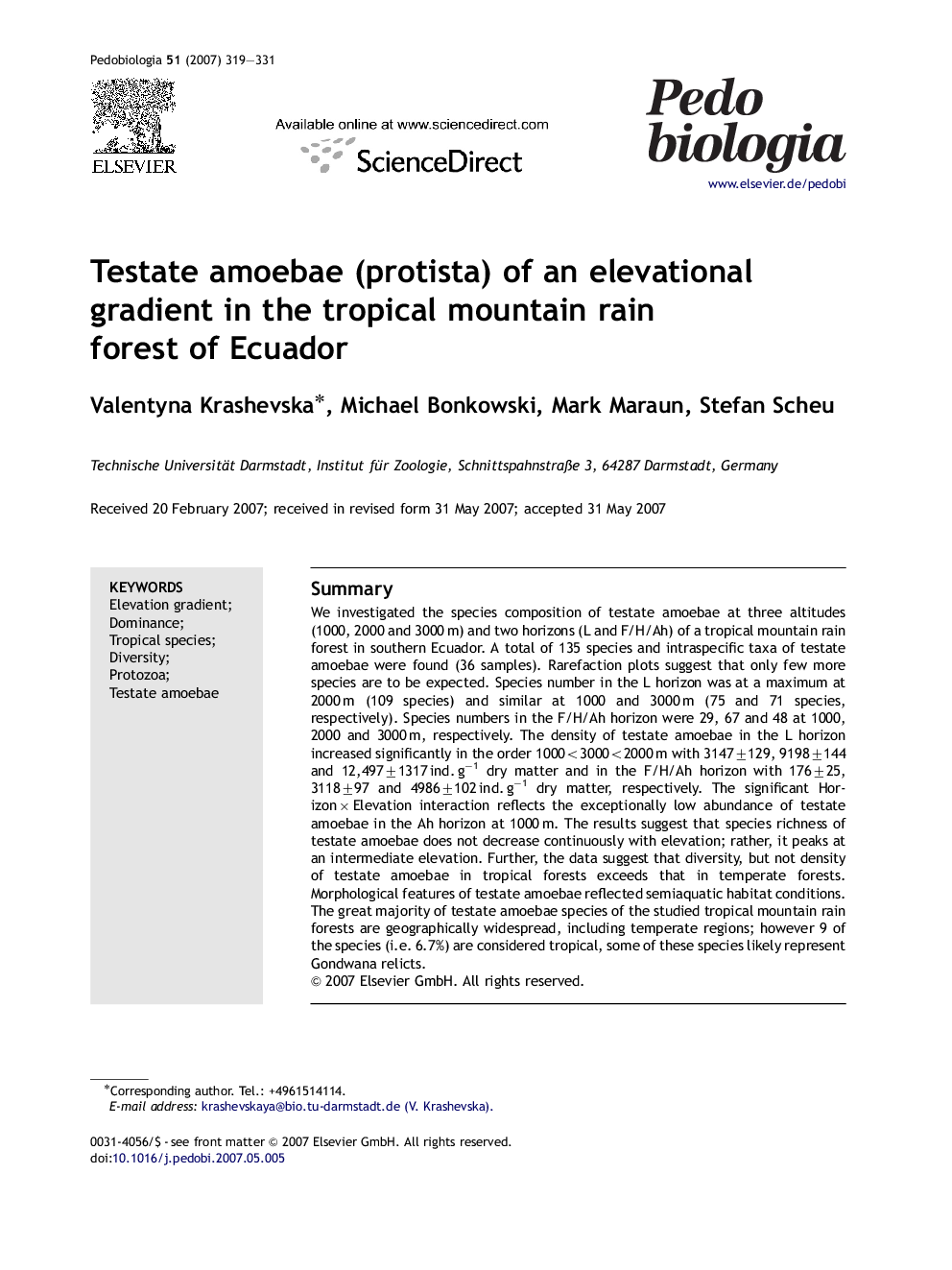| کد مقاله | کد نشریه | سال انتشار | مقاله انگلیسی | نسخه تمام متن |
|---|---|---|---|---|
| 2061136 | 1076438 | 2007 | 13 صفحه PDF | دانلود رایگان |

SummaryWe investigated the species composition of testate amoebae at three altitudes (1000, 2000 and 3000 m) and two horizons (L and F/H/Ah) of a tropical mountain rain forest in southern Ecuador. A total of 135 species and intraspecific taxa of testate amoebae were found (36 samples). Rarefaction plots suggest that only few more species are to be expected. Species number in the L horizon was at a maximum at 2000 m (109 species) and similar at 1000 and 3000 m (75 and 71 species, respectively). Species numbers in the F/H/Ah horizon were 29, 67 and 48 at 1000, 2000 and 3000 m, respectively. The density of testate amoebae in the L horizon increased significantly in the order 1000<3000<2000 m with 3147±129, 9198±144 and 12,497±1317 ind. g−1 dry matter and in the F/H/Ah horizon with 176±25, 3118±97 and 4986±102 ind. g−1 dry matter, respectively. The significant Horizon×Elevation interaction reflects the exceptionally low abundance of testate amoebae in the Ah horizon at 1000 m. The results suggest that species richness of testate amoebae does not decrease continuously with elevation; rather, it peaks at an intermediate elevation. Further, the data suggest that diversity, but not density of testate amoebae in tropical forests exceeds that in temperate forests. Morphological features of testate amoebae reflected semiaquatic habitat conditions. The great majority of testate amoebae species of the studied tropical mountain rain forests are geographically widespread, including temperate regions; however 9 of the species (i.e. 6.7%) are considered tropical, some of these species likely represent Gondwana relicts.
Journal: Pedobiologia - Volume 51, Issue 4, 19 October 2007, Pages 319–331